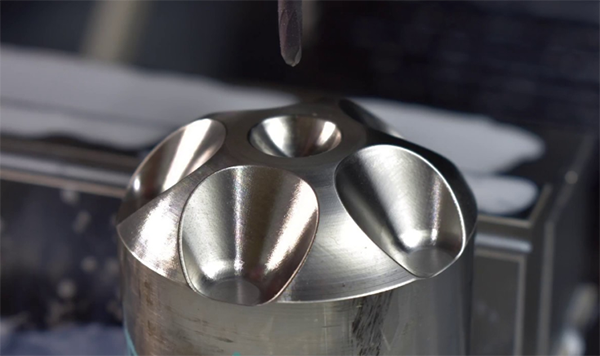Fifty years prior, mechanics were consistently liable for creating every piece flawlessly. These abilities are yet required, yet when it comes to creating a similar piece at high volume and high accuracy, automated machines are immeasurably predominant. That is the place CNC milling comes in.
CNC milling is an assembling technique that utilizes pre-modified PC programming to control machining devices. This innovation can be used to play out a scope of complex procedures, including granulating, steering, processing, punching, turning, and lathing. CNC milling upset the business in the 1960s and is the predominant technique for machining today. It is imperative to comprehend the different focal points and hindrances of using this innovation in your assembling tasks.
We could confine ourselves to depicting the creation procedure; however, giving an outline of the total stream gives an increasingly good picture.

CNC-milling-titanium*
The milling procedure incorporates:
- Designing the parts in CAD
- Translating the CAD documents into code for machining
- Setting up the apparatus
- Producing the parts
Planning the CAD records and interpretation into code
The initial step is making the virtual portrayal of the last item in CAD programming. Numerous fantastic CAD-CAM programs let the client make the necessary G code for machining. The code is accessible for checking and changing, if vital, to suit the machine’s capacities. Additionally, producing designers can reproduce the entire cutting procedure utilizing this sort of programming.
This permit checking for botches in the plan to abstain from making models that are impractical to deliver.
G code can likewise be composed physically, as was done before. This, be that as it may, drags out the entire procedure extensively. Along these lines, we would propose utilizing the conceivable outcomes current designing programming offers.
Set up the machine
Even though CNC machines accomplish the cutting work naturally, numerous different parts of the procedure need a machine administrator’s hand. For instance, fixing the workpiece to the worktable just as connecting the milling apparatuses to the shaft of the machine.
Manual milling relies vigorously upon the administrators, while more up to date models have further developed mechanization frameworks. Present-day milling focuses may likewise have live tooling potential outcomes. This implies they can change the instruments in a hurry during the assembling procedure. So, there are fewer stops; however, somebody despite everything needs to set them up heretofore.
After the underlying arrangement is made, the administrator checks the machine program one final time before giving the hardware the green light to begin.
Creation work
The milling procedure utilizes a turning apparatus that meets the workpiece to cut off chips. The ceaseless cutting outcomes in the ideal shape. A couple of various approaches to play out the cutting are conventional milling and climb milling.
Bottom line
For the most part, the milling procedure contains a couple of various activities; however, this relies upon the state of the last item and the condition of the thick piece. Regularly, milling is essential for giving an accurate completion and including a couple of highlights like openings or strung gaps. Be that as it may, it is likewise appropriate for making a completed part from a square of material. The main activities utilize more significant devices to rapidly cut away the plastic to affix the procedure until getting to a surmised state of the last piece.
An apparatus change is essential to make the exceptionally exact machined parts. The extraordinary exactness milling is famous for is accomplished in the last stage, taking the resistances and surface harshness to levels hard to coordinate with some other manufacturing process.
Reference
*Image from https://www.cnclathing.com/
